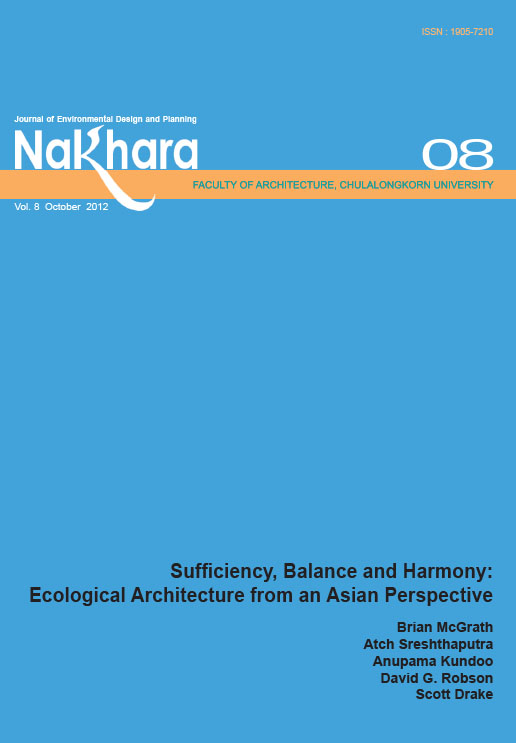Ecological Architecture with Vernacular Character: Contemporary Mud Architecture Practices in Bangladesh
Main Article Content
Abstract
The vernacular construction technique of mud architecture in Bangladesh has been in practice for a
long time and forms a major part of rural buildings. However, a lack of formal practice and patronage has allowed the vernacular techniques to be neglected. Thus the indigenous architecture appears as incompatible with mainstream development and modern knowledge. Therefore, support is necessary to sustain vernacular mud architecture. This paper examines an internationally awarded case study where modern knowledge and ecological building techniques have been initiated as an inter-cultural initiative of mud architecture to improve the current situation. This paper intends to critically investigate how far those initiatives are in line with traditional vernacular architecture. Findings show that modern knowledge and eco-friendly materials in combination with vernacular practices if used in a comprehensive way can pursue an “Ecological Architecture with Vernacular Character” which contains people’s aspiration and at the same time looks after the earth.

